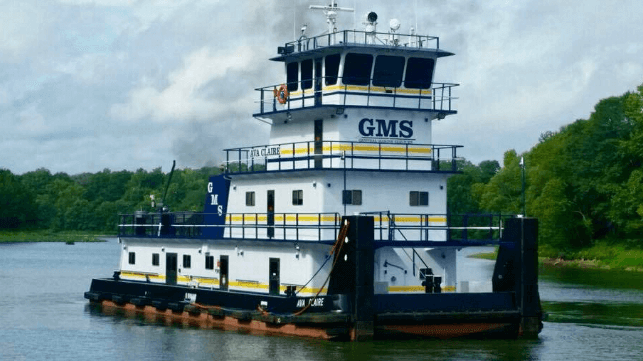NTSB Warns Mariners of the Hazards of Sleep Inertia

In an after-accident report released Tuesday, the National Transportation Safety Board warned of the risk of "sleep inertia" - the temporary feeling of grogginess felt after waking up - for mariners on a rotating watch schedule.
According to NTSB, sleep inertia usually lasts for about 30 minutes after waking, and it may last longer if a person is sleep deprived. It is a common condition for shift workers in all industries, according to the Sleep Foundation. NTSB advises that mariners should allow enough time to fully recover from sleep inertia before taking a watch or performing critical duties - a challenging order, since mariners are on call at all hours and often face challenges getting enough rest.
The recommendation stems from a casualty last year involving a towboat on the Intracoastal Waterway. On the morning of March 22, 2021, the towboat Ava Claire was headed westbound in the Gulf Intracoastal Waterway near Intracoastal City, Louisiana, with the master at the helm. After entering the Leland Bowman Lock, the bow of the lead barge struck a closed lock gate. There were no reports of pollution or injuries, but the impact caused $2.5 million in damage to the gate.
The towboat was working a six and six schedule, and the master - a 31-year veteran of the towing industry - had the six-to-twelve watch. At about 0030 hours on the morning of the casualty, he went to sleep after his usual night watch. He woke at about 0500 hours, after about 4.5 hours of sleep, and he went up to the wheelhouse to take over the watch early, as was his practice. The towboat was about five minutes away from entering the Leland Bowman Lock. Though the towboat's pilot offered to keep the watch through the locks, as he had planned, the master relieved him early and took over. It was still before dawn.
Before he left the wheelhouse, the pilot told the captain that he was having difficulty reaching the deckhand on the bow of the lead barge by radio. As the towboat entered the locks, the deckhand called off distances to the lock gate at the far end using the radio. He told investigators that he and the captain were having a "little issue" with the handheld radio comms, and the captain couldn't hear his distance calls.
As the captain maneuvered into the lock, his GPS lost signal and failed, leaving him without a position on his electronic chart system. He could still judge speed and distance by looking out the window. The captain regained GPS shortly after and put the engines full astern at about 200 feet from the gate, but the tow kept going. At about 0522, it made contact with the lock gate at a speed of about one knot. The steel plate, internal framing, and sections of the rack-and-pinion structure on the lock gate were bent 12 inches inward where the barge struck. The gate was also knocked out of alignment and could not be fully opened.
"Given his limited experience with the Ava Claire, his lack of a full night’s sleep, and the time of day, the captain’s taking the watch immediately before navigating the Ava Claire tow through the Leland Bowman Lock increased the risk of this critical maneuver," concluded NTSB. "As the master of the Ava Claire, the captain should have been familiar with the vessel operating policies and procedures and should not have taken the watch on the morning of the casualty. However, his decision to take the watch may have also been the result of impairment caused by sleep inertia."
